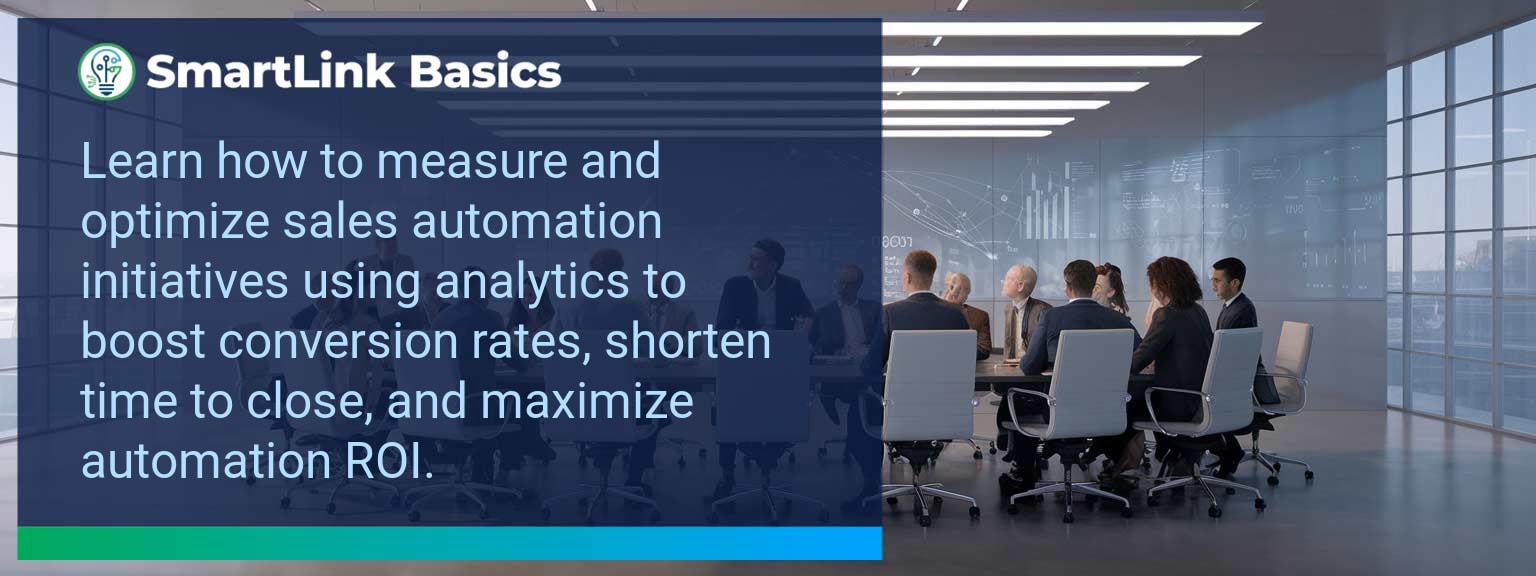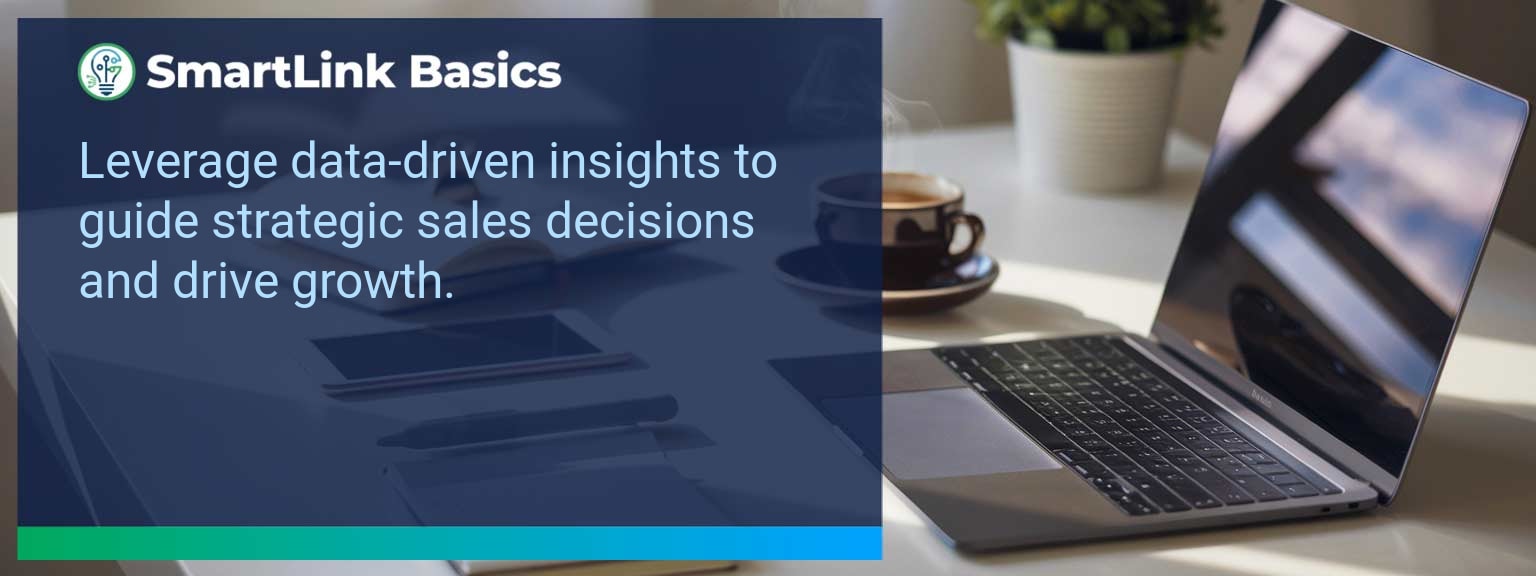Industry data shows that organizations adopting AI-driven automation achieve cost reductions of up to 30% while accelerating sales cycles by 20% or more (McKinsey, 2024). For sales leaders, AI automated workflows now define competitive advantage, enabling teams to reallocate time from repetitive tasks to high-value engagements. At SmartLink Basics, we help decision-makers implement these systems strategically, ensuring they integrate with existing revenue operations. In this article, you’ll see how AI automated workflows power business outcomes, the common obstacles that slow adoption, and practical steps to optimize processes. You’ll walk away with proven examples, a 90-day action blueprint, and measurable KPIs to track results.
- Automate repetitive administrative and CRM updates with AI.
- Integrate machine learning to personalize outreach at scale.
- Streamline approvals, quotes, and contract workflows for speed.
- Use predictive analytics to prioritize sales opportunities.
- Track adoption and performance with targeted metrics.
AI Automated Workflows: What Changed and Why It Matters
AI adoption has shifted from experimental to operational, making automated workflows a standard in high-performing sales organizations. The real advantage lies in combining workflow automation with artificial intelligence workflows to optimize every step of the revenue process. Sales leaders now use AI to synchronize touchpoints, reduce manual inputs, and ensure faster execution. For example, a B2B SaaS leader introduced automated lead enrichment and routing, cutting qualification time by 60%. Actionable insight: Audit processes for time-intensive handoffs and apply AI where repeatability is high.Redesign the Revenue Operating System With AI Automated Workflows
ICP, Segmentation, and Targeting AI-enabled segmentation uses historical wins, firmographic, and behavioral data to dynamically update ICP profiles. This ensures targeting precision without quarterly re-work. Pipeline Architecture Automated workflows push opportunities through the right stages based on engagement signals. AI flags at-risk deals for intervention. Plays and Messaging Integrated automation tools deliver personalized sequences based on buyer activity, increasing relevance at every touchpoint. Operating Cadence AI schedules follow-ups, forecast calls, and account reviews based on actual pipeline movement rather than static calendars. Actionable insight: Implement automation that adapts in real-time to both internal and buyer-driven events.Common Obstacles To Achieving Seamless Automation
The most frequent challenges are fragmented systems, inconsistent data quality, and cultural resistance. Without a unified data layer, automation amplifies errors rather than solving them. Coca-Cola Europacific Partners reported needing a full data governance upgrade before AI could improve sales workflows. Leaders must first assess infrastructure readiness and train teams to trust AI-influenced recommendations. Actionable insight: Before deployment, establish clean data practices and a single source of truth.Implementing AI To Optimize Workflows
Effective deployment of AI process optimization starts with mapping current-state processes, identifying friction points, and matching them with automation tools. For example, automating proposal generation based on CRM opportunity data can reduce turnaround from three days to one hour. Solutions combining business process automation platforms with machine learning integration enable continuous performance improvement. Actionable insight: Pilot in one high-impact stage, measure, and then expand.Tangible Benefits From Automated Processes
The benefits extend beyond time savings — sales leaders gain a scalable system. Tangible outcomes include faster quote-to-close, higher lead conversion, and better forecast accuracy. A manufacturing firm implemented AI-assisted order processing and cut errors by 40%, improving on-time delivery rates. Actionable insight: Track both speed and accuracy to measure workflow automation effectiveness.Metrics That Matter
| Category | Metric | Definition | Target |
|---|---|---|---|
| Leading | Workflow Completion Rate | % of automated sequences executed without manual intervention | 95%+ |
| Leading | AI Suggestion Adoption Rate | % of AI-generated action recommendations executed by reps | 80%+ |
| Lagging | Cycle Time Reduction | Decrease in time from lead entry to closed-won | 20%+ |
| Lagging | Revenue Per Rep | Average sales revenue generated per sales rep per quarter | +15% YoY |
| Quality | Automation Error Rate | % of workflows that trigger incorrect outcomes | <1% |
| Quality | Customer Satisfaction Post-Automation | Average CSAT score after automation implementation | ≥ 4.5/5 |
Innovations And Next Steps For AI Automation
Emerging capabilities like AI-generated playbooks, intent-driven dynamic routing, and integrated AR for virtual product demos are shaping the next wave of sales automation. Companies integrating these tools early will outpace competitors in speed and personalization. Actionable insight: Stay ahead by testing emerging automation features quarterly and aligning them with evolving buyer expectations.Get the 90-day plan, coaching rubric, and dashboard template to operationalize AI in your enablement program.
Turning AI Automation Into a Revenue Multiplier
AI automated workflows are now a strategic lever for predictable, scalable growth. This guide outlined current applications, adoption challenges, a 90-day execution plan, and measurable success criteria. To make automation pay off, sales leaders should integrate tools into one cohesive operating system and review results monthly for continuous improvement. Access more AI-driven sales enablement resources from SmartLink Basics to design a high-performance automation strategy. Recruiting and developing top-performing sales talent requires precision, structure, and consistent execution. According to CSO Insights, only 16% of sales teams consistently hit quota, highlighting a critical need for strategic hiring and leadership. At SmartLink Basics, we focus on equipping sales leaders with the tools to build high-impact teams that drive predictable revenue growth. This article outlines proven approaches for recruiting, onboarding, and enabling sales professionals who can deliver measurable results. By applying these strategies, you can strengthen your sales leadership, reduce turnover, and accelerate performance gains.- Select candidates with proven track records in similar sales cycles
- Define clear sales competencies before interviews
- Invest in structured onboarding and skills development
- Align compensation with performance objectives
- Track leading and lagging performance metrics
What Changed and Why It Matters for Sales Leadership
The talent market for top-tier sales professionals is more competitive than ever. Remote work has widened the recruitment field, increasing both opportunity and competition. Sales leadership must adapt by refining selection criteria, adopting data-driven recruitment strategies, and accelerating onboarding effectiveness. For example, companies that implement competency-based hiring combined with tailored onboarding often see faster time-to-quota and reduced turnover rates. A key takeaway is to focus on revenue impact speed. The quicker a hire moves from onboarding to productive selling, the greater their contribution to targets.Identifying Obstacles to Team Growth
Effective sales leadership begins with recognizing barriers that slow team progress. Common issues include unclear role expectations, overreliance on a single recruitment channel, and insufficient onboarding structure. For example, relying solely on inbound applicants can limit talent diversity and performance potential. Instead, a multi-channel sourcing plan—leveraging networks, recruiter partnerships, and professional platforms—broadens candidate quality. Actionable insight: Audit your last five sales hires for source, ramp time, and first-year performance. Identify sourcing gaps and onboarding weaknesses.Implementing Effective Recruitment and Training
Once obstacles are identified, sales management must design a recruitment and training system that scales. Define precise sales competencies, use structured interviews to assess them, and create a repeatable onboarding framework. Example: A SaaS provider mapped their sales competencies to include discovery precision, negotiation discipline, and CRM accuracy. They aligned training to these metrics, resulting in 22% higher average deal size within six months. Actionable insight: Pair each new hire with a peer mentor and track skill acquisition at 30, 60, and 90 days.Achieving Measurable Performance Improvements
High-performing sales teams are built on measurable progress. Sales leadership should establish key performance indicators across leading, lagging, and quality metrics. Tracking early-stage pipeline metrics ensures warning signs are caught before quarter-end. Teams that monitor buyer engagement rates alongside traditional revenue measures tend to see sustained growth. Actionable insight: Integrate metrics tracking into weekly operating cadence to ensure accountability and agility in course corrections.| Category | Metric | Definition | Target |
|---|---|---|---|
| Leading | Qualified Pipeline Coverage | Ratio of pipeline value to quota | 3x quota |
| Lagging | Closed-Won Revenue | Revenue from deals marked Closed-Won | 100%+ quota |
| Quality | Win Rate | Percentage of qualified opportunities won | 35%+ |
Preparing for Long-Term Sales Excellence
Sustainable success in sales leadership requires a pipeline of both prospects and talent. Maintain active recruitment even without immediate openings, and invest in continuous development programs. Example: A manufacturing firm created a quarterly talent review to identify future leadership candidates among SDRs and account executives, ensuring bench strength for scaling. Actionable insight: Link employee development plans with organizational revenue strategy to align personal growth with business goals.Get the 90-day plan, coaching rubric, and dashboard template to operationalize AI in your enablement program.
Building a high-performing sales team demands clarity in recruitment, precision in training, and discipline in measurement. By reinforcing sales leadership with structured hiring and enablement, organizations can achieve consistent revenue growth and long-term competitive advantage.









